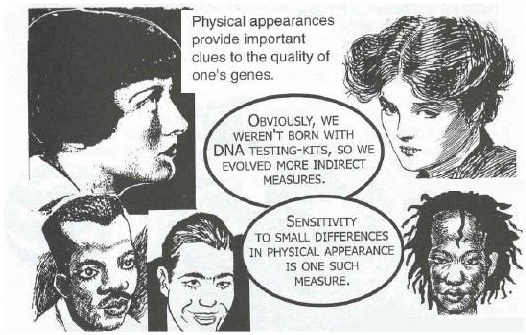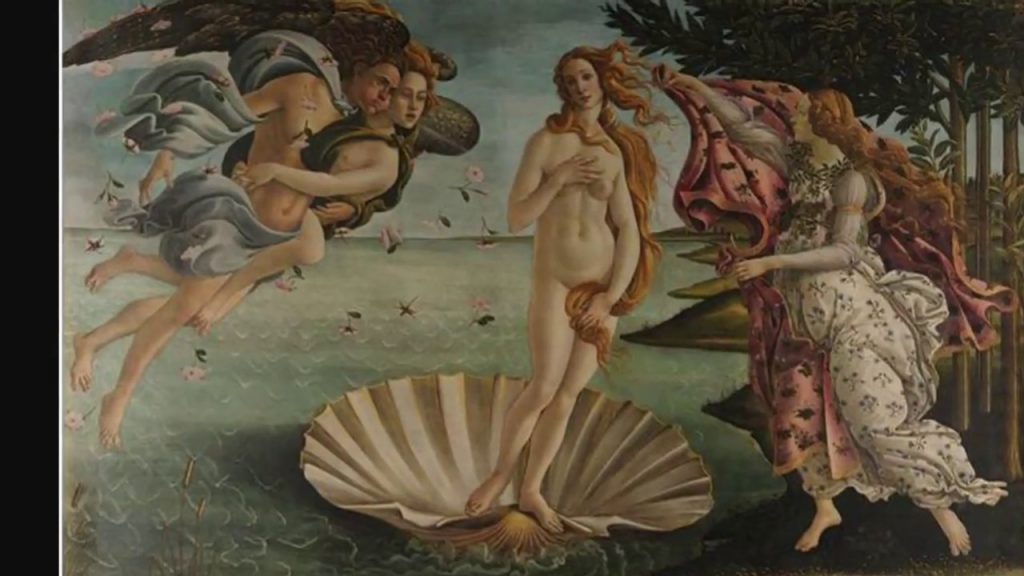This paper briefly summarises what is currently found about facial attractiveness and how single attractiveness features are interrelated. Researches relating to attractiveness cues highlights flexible and sophisticated systems that support adaptive responses to faces that appear to function to maximize the benefits of both our mate choices and more general decisions about other types of social partners. Main findings and hypotheses:
- Attractiveness standards are mainly cross-cultural
Bilateral Symmetry is Important for Attractiveness and it Reflects:
- High quality of development of the individuals
- Individuals have the ability to cope with the environment
- But it is probably not the primary cue, so it may be not the result of evolved adaptation but a by-product of the perception
Studies About Facial Averageness Suggest that Average Faces are More Attractive
- Both symmetry and averageness may indicate heterozygosity (adaptations which come from different alleles -> 2 different feature inherited from each parent) which show immunity against parasites according to researches
Hormone Markers
- Testosterone level affects body and facial features of males. As it suppresses the immune system, individuals with the signs of ‘masculinity’ indicate a quality of coping against its weakening effects
- Female hormone markers indicate age, body features and fertility. The high immune system can deal with the weakening effects of the oestrogen as well.
- Skin condition and hairless face are attractive for males may represent fertility as it is associated with high oestrogen and low androgen
- Hormone markers for males are complex as not all females are attracted to masculinised male faces. Reason for this that masculinised males faces are perceived less warm and hones (links to antisocial behaviour) than feminized male faces
Attractiveness and the Menstrual Cycle
- In the cycle when the likelihood of conception is high females preference shifts to masculine faces (so the offspring may gain these heritable benefits of the father – evolutionary explanation)
- So the female’s choice if affected by the levels of hormones circulating in their blood
Individual Differences in Perception of Attractiveness
- Differences in attractiveness judgement exist
- Psychological factors indicate predictability in preference
- Women who performed low on psychological ‘masculinity’ test, have larger preference shift across the menstrual cycle, had lower self-esteem and they had a greater preference for male facial dominance
- Father-daughter bonding could enhance female’s self-esteem and reduce her sensitivity to male dominance cues, while a lack of attachment had an opposite effect
- Offsprings of older parents were less impressed by the youth in a potential partner than were children of younger parents
- Those females who considered themselves attractive have higher preference for two markers of quality in male faces: masculinity and symmetry
- The same preference for masculinity has been found using women’s facial attractiveness and waist-to-hip ratio
Beauty a Single Ornament of Mate Quality
- All mentioned features are probably interacting and each signalling different aspect of mate value
- Cues of attractiveness are integrated into a single ornament (evaluation) of mate value, however, individuals differ in judgments of attractiveness
Beauty has a Reward Value
- Perceived attractiveness can activate brain regions that are linked to reward
- Eye contact with attracting individuals appear to be more ‘rewarding’ than eye contact with less attracting individuals
Download this document in PDF
Facebook Comments



